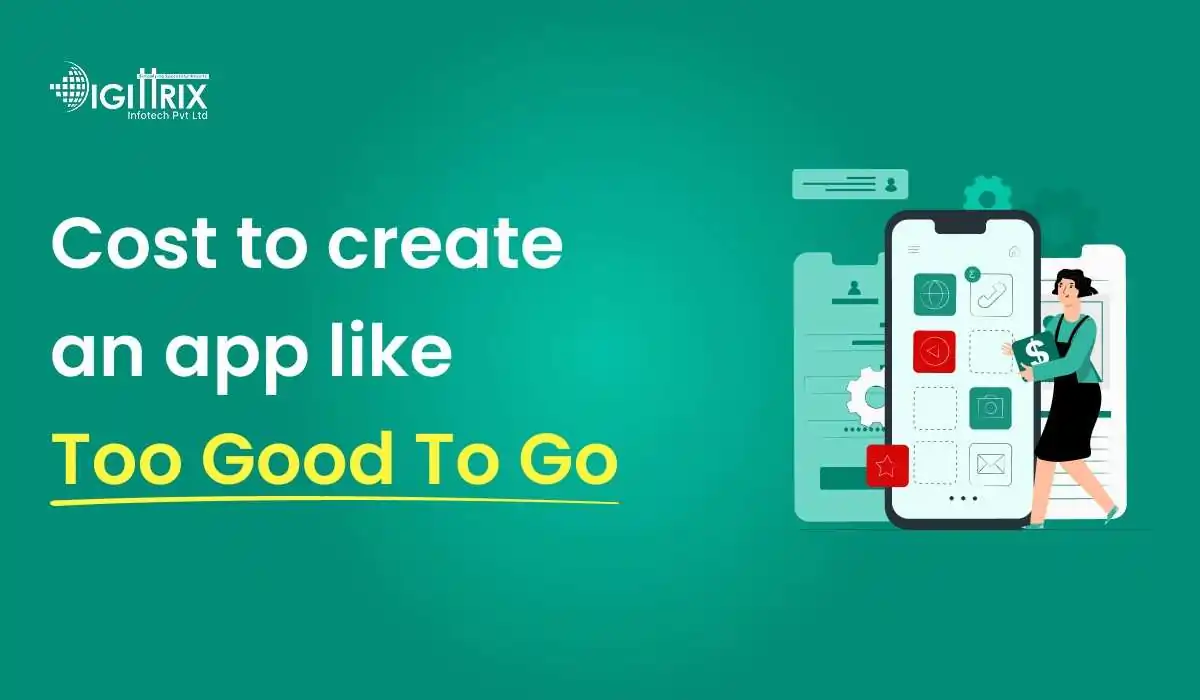Food waste is a global issue, with around one-third of all food produced being wasted annually. Apps like Too Good To Go help combat this problem by redistributing surplus food. The demand for waste food management apps is rising, with the food delivery app market expected to grow significantly.
Highlights
An enthusiastic developer and skilled business management expert with over a decade of experience in the field

Worldwide concern about food waste is now being resolved through practical applications like Too Good To Go. The app enables users to connect with restaurants, bakeries, and grocery stores that distribute their leftover food at reduced prices. Many businesses seek to develop apps that address food waste while creating financial benefits. But how much does building a food waste app like Too Good To Go cost? Let's break it down.
The cost of developing a waste food management app depends on multiple factors, including design, features, development team, and platform choice. Below are the key factors that influence the budget:
The selection of the platform determines major cost aspects. Developing an application for Android and iOS together will lead to higher costs than developing it for one operating system alone. The development of an app through working with a Mobile app development company becomes beneficial when your target users prefer Android systems.
Users who need their business solutions to function across Android and iOS devices should seek Android and iOS app developers who build suitable codebases to minimize expenses.
Discover the top mobile app development frameworks for 2025! Check Digittrix's expert insights to stay ahead in the industry!
The complexity of the app’s features plays an important role in determining development costs. Below are some key features of a food waste app like Too Good To Go:
The cost of mobile app development increases as each additional feature is implemented based on its complexity during programming.
A user-friendly interface design with visual attractiveness delivers satisfaction to users. The implementation of a practical food ordering system with efficient pickups needs dedicated investment into UI/UX design for creating a user-friendly interface. Design expenses depend on the quantity of screens, custom animations, and interactive elements.
The choice of programming languages and frameworks affects development costs. Generally used technologies for building food waste apps include:
A hybrid app development company may use React Native or Flutter to build an app that works smoothly across multiple platforms, reducing costs compared to separate native apps.
The cost of hiring an app development team depends on their location and expertise. Below is a general estimate of hourly rates in different regions:
For those looking for budget-friendly options, hiring an experienced Android and iOS mobile app developer can significantly reduce costs while ensuring quality work.
Following the application launch users need regular updates together with security patches and bug fixes. The annual maintenance costs mean 15-20% of the complete development expenses.
The estimated cost to build an app like Too Good To Go varies based on its complexity:
Basic Version App: A basic version with minimal features will cost around USD 2,000 - USD 5,000 (INR 1,50,000 - INR 3,00,000).
Moderate Complexity App: A moderate complexity app with more advanced features will cost approximately USD 5,000 - USD 10,000 (INR 3,00,000 - INR 5,00,000).
Advanced Features App: An advanced app with AI-based recommendations, custom UI, and real-time tracking can cost between USD 10,000 or more (INR 5,00,000 or more).
A basic food waste app with minimal features will cost around USD 2,000 to USD 5,000 (INR 1,50,000 - INR 3,00,000). If you include advanced features such as AI-based recommendations, custom UI, and real-time tracking, the cost can go up to USD 10,000 (INR 5,00,000) or more.
The implementation of third-party integrations in the app including Google Maps, Stripe or Twilio requires additional charges to be incurred. Every usage-related fee from APIs should be integrated into the overall cost estimation.
Launching a mobile app successfully requires marketing efforts, including digital advertising, SEO, and social media advertisements.
The food waste application needs to meet food safety guidelines and data security regulations. Seeking legal help along with privacy policy creation and performing compliance tests will lead to additional expenses.
Developing an app delivers value to businesses by reducing food waste through efficient operations. Several key factors determine project costs during on-demand app development including selected features alongside selected platform type and workforce position alongside ongoing maintenance costs. A fully functional app like Too Good To Go can range between USD 2,000 - USD 10,000 (INR 1,50,000 - INR 5,00,000), depending on its complexity.
A mobile app development company enables businesses to develop their comparable food waste application through a seamless approach. Businesses that optimize their development strategies will establish an efficient and revenue-generating solution to address food waste.
The development expense is subject to management through strategic planning and partner selection along with gradual enhancement of application features. Developing food waste applications through correct planning systems becomes both powerful and financially advantageous for businesses.
A food waste management app like Too Good To Go is essential for reducing food wastage, connecting users with surplus food, and promoting sustainability. It should include a user-friendly interface, real-time inventory updates, secure payment options, and a seamless ordering system. To provide the best experience, the app should ensure smooth navigation, interactive features, and verified customer reviews.
If you're considering building a custom waste food management app like Too Good To Go, contact Digittrix.
Create your on-demand food waste app with us! We are a leading mobile app development company with 14 years of experience and a team of expert developers at Digittrix.
If you're interested in building an app but unsure where to start, schedule a consultation today with our expert technical managers by calling +91 8727000867.
You can also write to us with your queries at digittrix@gmail.com.

Do you need help in Mobile App development?




Join over 1500+ businesses we've already helped!
The development timeline depends on the complexity of the app. A basic version may take 3-6 months, while a feature-rich app can take 9-12 months.
It depends on your target audience. If you want a cost-effective solution, hybrid app development is a good option, as it works on both Android and iOS.
Yes, you can start with a minimal viable product (MVP) with essential features and expand as your user base grows.
Recurring costs include app maintenance, hosting, server costs, marketing, and updates. These usually account for 15-20% of the total development cost annually.
Yes, integrating payment gateways such as Razorpay, Stripe, or PayPal allows users to make secure online transactions for purchasing surplus food items.

©2025Digittrix Infotech Private Limited , All rights reserved.